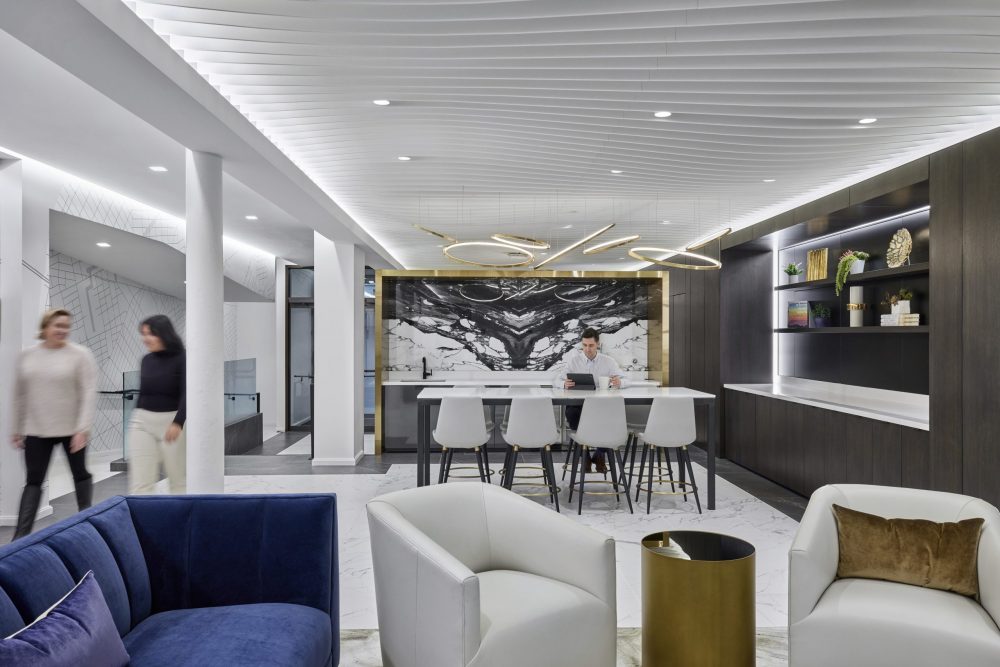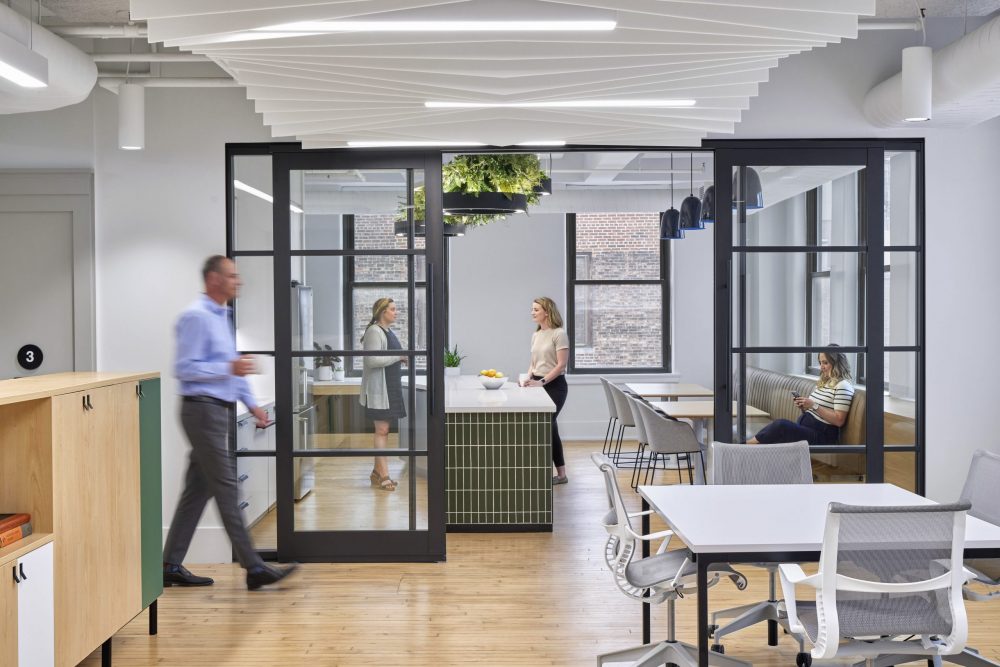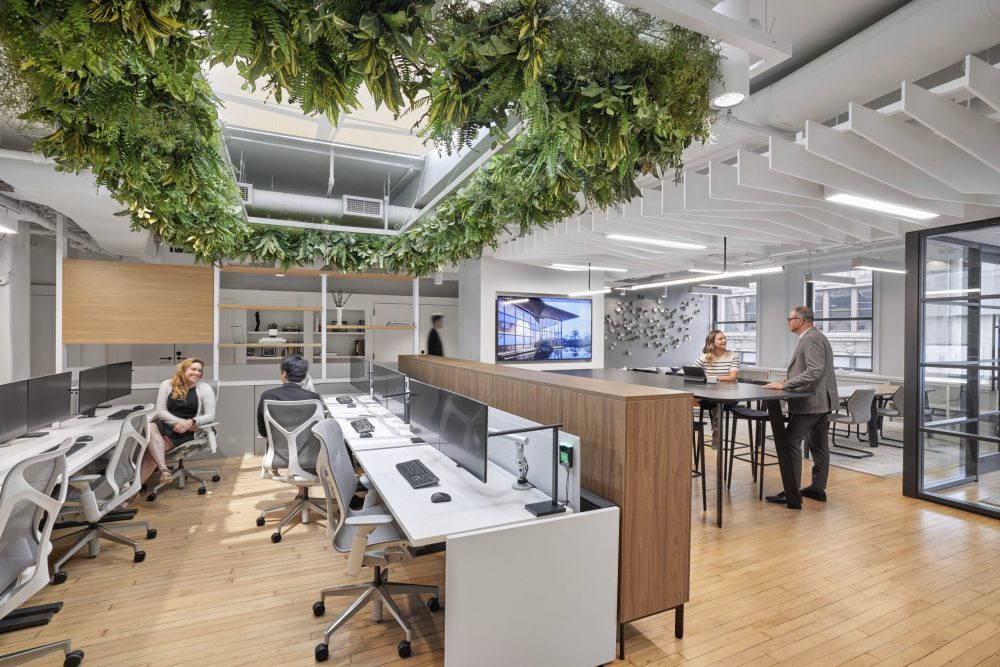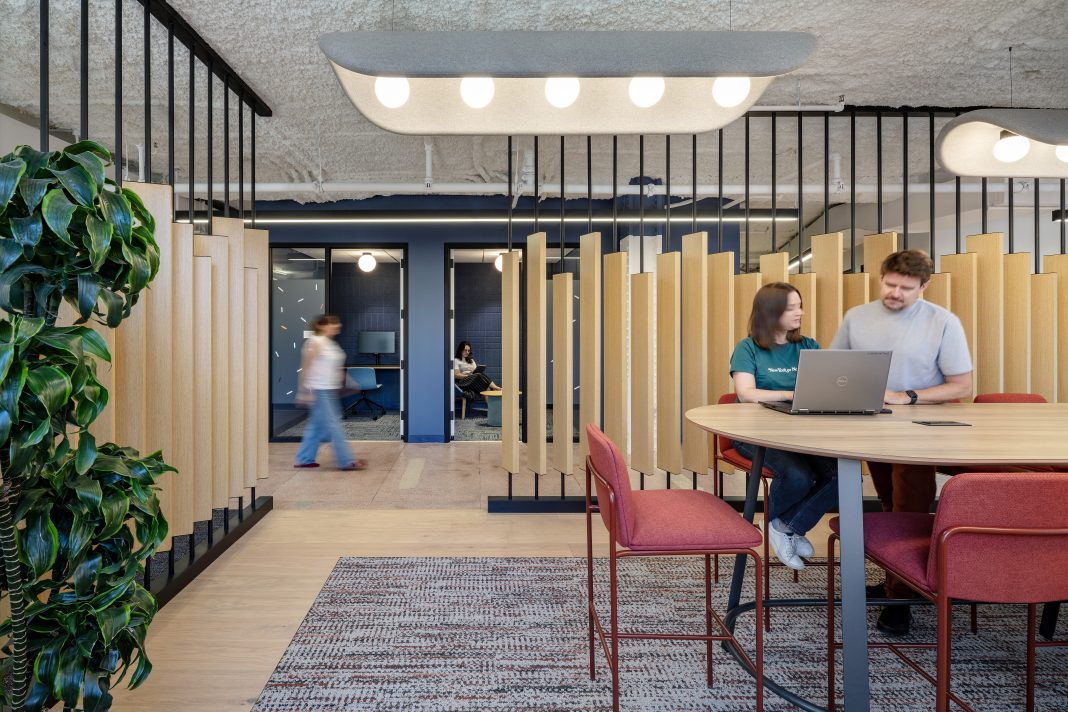The workplace is more than a physical environment. It’s an ecosystem where people bring their whole selves, aspirations, and challenges.
When leaders approach design and culture with empathy, they don’t just shape how spaces look and function; they transform how people feel and thrive within them. Inclusive leadership and design rooted in empathy can create workplaces where individuals feel valued, supported, and empowered.
As the President of the International Interior Design Association’s New York Chapter (IIDA NY) for the 2025-2026 term, I’ve been reflecting on how we, as designers and leaders, can foster more inclusive and supportive communities. The design profession is at a turning point: recent graduates face higher unemployment, entry-level opportunities are shrinking, and the path into the workplace is increasingly complex. Against this backdrop, it’s critical to ensure the next generation of designers feels welcomed, supported, and connected.

A Journey Shaped by Resilience and Human Connection
My own journey into design began not in a studio, but in a ballet class. Dance taught me the importance of presence, storytelling, and connection—qualities that continue to inform how I think about workplace design. Just as movement can communicate without words, design has the power to hold, uplift, and inspire people.
I’ve also navigated challenges that shaped my perspective. Living with hearing loss has made me deeply aware of what it feels like to struggle to be fully understood. Early on, I often avoided asking people to repeat themselves out of fear of being a burden. Over time, I learned to advocate for myself and for changes that make spaces more inclusive, such as the installation of tele-loop technology in office meeting rooms. These experiences reinforced my belief that workplace design should not only be functional and beautiful but also equitable and accessible. Everyone deserves to belong in the spaces we create.
Why Inclusive Leadership Matters Now
Inclusive leadership is not simply about representation; it’s about fostering environments where people feel valued for who they are. It means creating systems of mentorship, cultivating empathy, and listening intentionally. When we lead inclusively, we amplify voices that might otherwise go unheard, and we open doors for individuals navigating barriers in their personal and professional lives.
At a time when the industry feels especially daunting for students and emerging professionals, leadership must model empathy and provide clear pathways for growth. Supporting young designers builds their confidence and sparks the bold, innovative ideas that enrich the entire profession.

How IIDA NY Is Building Connection with Intention
At IIDA NY, we believe design thrives when rooted in community. This year, my focus is on “connection with intention” and ensuring our chapter creates meaningful opportunities for all members, regardless of career stage. That vision is coming to life through three key initiatives:
- Expanded Mentorship Pathways
We’re reimagining how mentorship can support designers across the first decade of their careers, while also engaging seasoned leaders who want to give back. By strengthening programs like SUP (Student Uplift Program, which connects students with practicing designers for career guidance), LMNOP (Leadership, Mentorship, Networking, and Opportunities for Professional Growth, a program tailored to mid-level designers seeking leadership development), and speed mentoring, we’re creating an intentional connection pathway where relationships can grow across generations of designers. - Listening Lounge Conversations
We’re launching a quarterly series of curated, intimate gatherings where members can share their experiences openly. The goal is to build a culture of listening, where emerging voices are heard and leaders gain insights that can inform meaningful change. These spaces allow for reflection, recalibration, and the kind of dialogue that nurtures trust. - Ongoing Community Dialogue
We’re continuing open office hours and engaging directly with our committees to ensure feedback leads to action. This is not about one-time initiatives but about establishing a culture of dialogue and responsiveness so that every member feels their voice matters.
Through these efforts, we hope to create an ecosystem where belonging is not conditional but foundational.

Photographer: © Garrett Rowland Photography
Designing With Empathy
Designing with empathy goes hand in hand with inclusive leadership. It requires us to ask not just what a workplace looks like, but how it makes people feel. Are the spaces adaptable to different abilities and working styles? Do they foster connection as well as focus? Do they signal safety, inclusion, and belonging?
Workplaces that embrace empathy in their design are better equipped to support diverse teams, attract top talent, and retain people who feel invested in their environment. When employees feel comfortable and empowered, they’re more innovative, more collaborative, and more resilient.
A Call to Action for Leaders and Designers
If we want the next generation to succeed, we must do more than offer advice—we must create structures of support and design practices that reflect empathy. Whether through mentorship, inclusive programming, or design solutions that prioritize accessibility, our role is to ensure emerging professionals don’t just enter the field but thrive within it.
This is not work any one person can do alone. It takes collective effort from students, designers, educators, and industry partners, working together with intention. At IIDA NY, we are committed to building that future. A future where showing up doesn’t just mean being present at an event, but truly feeling like you belong to a community that values your presence and your contribution.
In the end, inclusive leadership is about presence, not perfection. It’s about showing up with empathy, listening with care, and creating opportunities for others to do the same. By designing workplaces—and professional communities—that honor these values, we can transform not only how we work but how we grow together.


